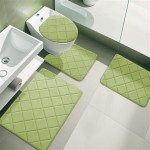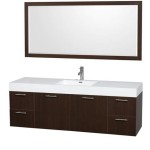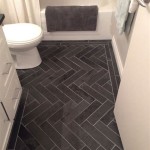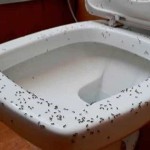Black Mold In Bathroom Sink: A Comprehensive Guide
Black mold in your bathroom sink is a common and unsightly issue that can be both frustrating and potentially hazardous. This article will provide you with a comprehensive guide to understanding black mold, its causes, and effective methods for removing and preventing it from recurring in your bathroom sink.
What is Black Mold?
Black mold is a type of fungus that thrives in moist environments. It is typically dark green to black in color and can grow on a variety of surfaces, including bathroom sinks. Black mold is not only unsightly, but it can also release harmful spores into the air, which can cause respiratory problems, allergies, and other health issues.
Causes of Black Mold in Bathroom Sinks
The primary cause of black mold growth in bathroom sinks is excessive moisture. This can occur due to several factors, including:
- Poor ventilation
- Excessive condensation
- Leaks or plumbing issues
- Infrequent cleaning
How to Remove Black Mold from Bathroom Sinks
If you discover black mold in your bathroom sink, it is important to take immediate steps to remove it. Here is a step-by-step guide:
- Ventilate the bathroom: Open windows or turn on the exhaust fan to provide adequate ventilation.
- Wear protective gear: Put on gloves, a mask, and safety glasses to protect yourself from mold spores.
- Mix a cleaning solution: Combine 1 cup of white vinegar with 1 cup of water in a spray bottle. You can also use a commercial mold cleaner.
- Spray the mold: Spray the cleaning solution directly onto the moldy areas. Allow it to sit for 15-20 minutes.
- Scrub the mold: Use a soft-bristled brush or sponge to gently scrub away the mold. Avoid using abrasive materials, as these can damage the sink surface.
- Rinse the sink: Rinse the sink thoroughly with clean water to remove the cleaning solution and mold spores.
- Dry the sink: Use a clean cloth or paper towels to dry the sink completely.
Preventing Black Mold Recurrence in Bathroom Sinks
Once you have successfully removed black mold from your bathroom sink, it is important to take steps to prevent its recurrence. Here are some proactive measures you can implement:
- Improve ventilation: Keep the bathroom well-ventilated by opening windows or turning on the exhaust fan during and after showers.
- Reduce condensation: Wipe down the sink and shower walls after use to remove excess moisture.
- Fix leaks: Address any plumbing leaks or issues promptly to prevent moisture accumulation.
- Clean regularly: Regularly clean the bathroom sink with a disinfectant cleaner to remove dirt and grime that can attract mold.
- Use mold-resistant products: Consider using mold-resistant caulk and grout in the shower and around the sink.
By following these preventative measures, you can effectively reduce the risk of black mold growth in your bathroom sink, ensuring a clean and healthy bathroom environment.

What Causes Black Mold In Sink Drains How To Get Rid Of It

5 Signs That You Have Mold Growing In Your Sink Drain

What Do About Black Mold In The Bathroom Bob Vila

How To Prevent Bathroom Mold The Bath Showcase

Bathroom Mold How To Identify And Get Rid Of In Environix

Top 5 Causes Of Black Mold Under Kitchen Sinks Get The Answers

How To Clean Mold In Bathroom Basin

This Was The Dirty Sink In Bathroom Black Mold Of Sanctuary At Grand Memories Santa Maria Cuba Tripadvisor

Is Black Mould In The Bathroom Dangerous Dbs Bathrooms

Bathroom Mold How To Kill On Ceiling







